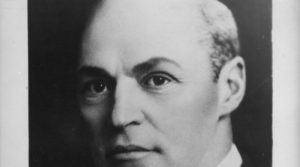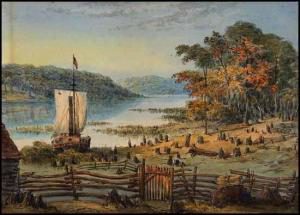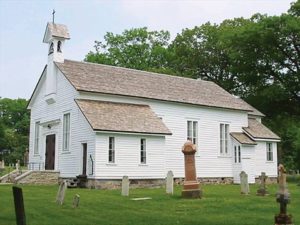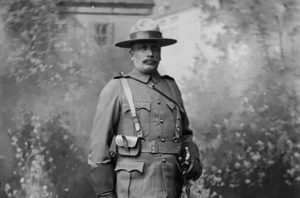 William Earl Rowe was born on May 13, 1894, in Hull, Iowa, to Canadian parents. He moved to Ontario with his family when he was two years old.
William Earl Rowe was born on May 13, 1894, in Hull, Iowa, to Canadian parents. He moved to Ontario with his family when he was two years old.
Rowe grew up to become a farmer and cattle breeder in the township of West Gwillimbury, with what proved to be a lifelong passion for horses and harness racing. In 1917, at age 23, he married Treva Alda Lillian Lennox. Together they had four children, one of whom sadly died at birth.
It was around this time that Rowe first entered politics, beginning at the local level. In 1919, at age 25, he was elected reeve of West Gwillimbury. In 1923, when his term as township reeve ended, Rowe’s political career began to eclipse his agricultural one when he was elected as a Conservative Member of the Legislative Assembly of Ontario for the riding of Simcoe South. In 1925 he graduated from provincial to federal politics when he was elected a Conservative Member of Parliament for Dufferin-Simcoe. Rowe remained in the House of Commons for ten years until the disastrous election of 1935, when he, like many Conservative MPs, lost his seat to the Liberals of William Lyon Mackenzie King over the Conservatives’ perceived bungling of the federal response to the Great Depression.
In 1936, Rowe returned to provincial politics when he became leader of the Conservative Party of Ontario. However, because Rowe did not then hold a seat in the provincial legislature, the former Conservative premier George S. Henry served as official leader of the opposition in the provincial parliament.
During the 1937 Ontario election, Rowe took a pro-labour stance that today seems uncommon for conservative politicians to have. Rowe opposed Liberal premier Mitchell Hepburn’s condemnation of labour unions and the attempted unionization of the General Motors plant in Oshawa, arguing that the issue was not about “law and order but the right of free association.” Rowe’s stance on the issue led George A. Drew, Rowe’s former rival for the leadership of the Progressive Conservatives, to break with the party in order to run as an “independent conservative” opposed to the mainstream party leader’s stance on organized labour.
Rowe failed to win a seat in the election and subsequently resigned as leader of the provincial Progressive Conservatives. George Drew later returned to the party to replace Rowe as leader. Drew went on to become premier of Ontario from 1943 to 1948.
Shortly after his defeat at the provincial level, Earl Rowe returned to federal politics when he was acclaimed in a by-election for the House of Commons seat he had vacated in order to run in the Ontario election.
Rowe kept his seat in the House of Commons for another 25 years. In 1948 Rowe’s former rival George Drew became leader of the federal Conservatives, and in 1954 and 1956 Rowe served as interim leader of the opposition when Drew was too ill to perform his duties. From 1958 until the end of his federal career in 1962, Rowe was joined in Parliament by his daughter and fellow Progressive Conservative MP, Jean Casselman Wadds. They were the only father and daughter to ever sit together in the House of Commons.
In 1963, Rowe left Parliamentary politics to become the 20th Lieutenant Governor of Ontario. Over the next five years, he proved himself to be a staunch supporter of agricultural and rural affairs in the province.
Rowe retired from political life in 1968, at age 74. He died on February 9, 1984, at Newton Robinson. A public school in Bradford and a provincial park near Alliston are named in his honour.
Written by John Merritt of the Simcoe County Historical Association.
Photo: William Earl Rowe was born in 1894 in Iowa to Canadian parents. He moved to Ontario with his family when he was two years old. He grew up to become a farmer and cattle breeder in the township of West Gwillimbury.



